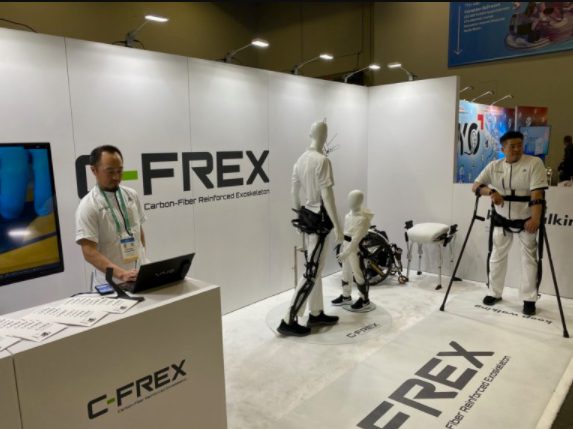This year, thanks to PaperKite, I achieved a childhood dream of attending the Consumer Electronics Show in Las Vegas in January 2020. CES is among the biggest technology trade fairs, annually showcasing new consumer products and tech – from the cool to the crazy to the downright colossal. This year CES had over 170,000 attendees, all from the tech industry, and around 4,400 exhibiting companies.
At PaperKite, we help clients embrace building better digital experiences for their audiences. I’m so glad we decided to head to CES to find out for ourselves what “better” actually looks and feels like, from bleeding-edge industry specialists.
And to discover just how many new consumer products now have a conversational interface (i.e. you control it by speaking) was mind-blowing. It’s already ubiquitous in North America, and NZ won’t be far behind.

But before that, here are a few of my more impressive highlights from this year’s show…
Sony’s concept car: despite some media expectations for a new game console, Sony’s actual reveal was the VISION-S prototype vehicle. While it looks like a car, the VISION-S is really a testbed platform to help Sony evolve their mobility technologies, and is equipped with a wide range of sensors, high definition displays and 5G connectivity.
Transparent and foldable displays: a wide range of transparent displays used for entertainment or as HUD (heads up display) in cars and other types of vehicles. There were also many companies showcasing foldable displays, not only on smartphones but in a wide range of applications like embedded in t-shirts, hats, personal assistants, even a giant tree where each leaf was a single foldable screen.

Exoskeletons and tracking displays: many examples of full body augmentation exoskeletons or small wearable “workout” devices. Samsung presented the G.E.M.S. (Gait Enhancing and Motivation System) – a device that can be used to assist with everyday walking or if paired with a set of VR glasses be used as a workout assistant that can track your movements and simulate harder conditions by limiting your movements.
Delta Airlines in partnership with Sarcos robotics showcased a wearable robotic exoskeleton that can bolster employee strength and safety, allowing any person to lift 90 kilos repeatedly for up to eight hours at a time without strain or fatigue.

Delta Airlines this time in partnership with Misapplied Sciences had a large space presenting the PARALLEL REALITY experience. The technology used allows a single display to present different images to 100 different viewers by tracking each viewer position. The objective is to use the display in airports allowing every passenger to have customised information no matter where they are.
Smart devices with embedded voice assistants were everywhere in the show
Dominated primarily by Amazon Alexa and Google Assistant. Smart cars, faucets, toilets, grills, robot arms – almost every consumer device included a Conversational User Experience to help control it.

The convergence is clear
Digital voice assistants are becoming the standard to interact with most home appliances. As a software developer I believe that voice assistants are the interface of the future – not just for physical products, but digital ones too – and there’s a ton of space to innovate on the software side of it. Both Google and Amazon have great resources for developers to build and publish applications that can interact with this new wave of devices. At PaperKite, we’re actively growing our skills and knowledge in creating Conversational Experiences, from exploring Voice Platform tools to producing prototypes and building real products.
If you’re a software developer or a consumer brand organisation and want to get into smart devices, and conversational experiences as a whole, this is an amazing time to start.
Drop us a line if you want some help!
New digital project? Keen to optimise your existing digital project? We’re always keen to talk.
Made with ♡ in Wellington
© 2020 PaperKite